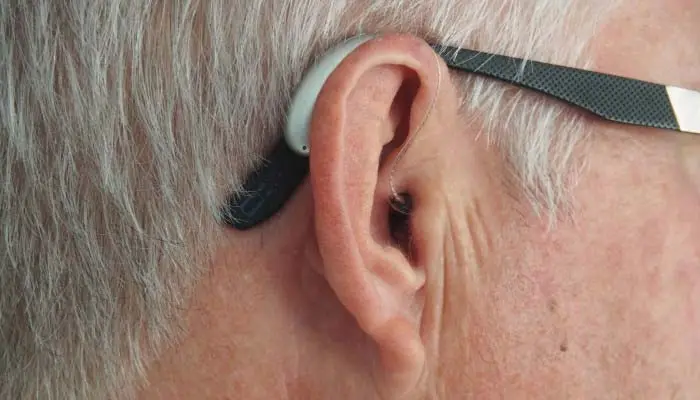Top Secret To Finding Perfect Hearing Aids
Hearing aids can be an excellent tool for people who suffer from hearing loss.
These small yet revolutionary devices have been around for a while, and have helped thousands of people improve their quality of life. But with so many different options available in the market, it can be hard to know which model is best for you and your needs.
If you would like to learn more about how hearing aids work, how to find affordable models, and what features you should consider, keep on reading.
How Do Hearing Aids Work?
There are three main parts to a hearing aid system: a microphone, an amplifier, and a speaker. The microphone section picks up sounds and converts them into digital signals, which are then sent to the amplifier. These signals are intensified and directed to the speaker, where these signals will be reproduced at a higher volume.
What Are The Different Types Of Hearing Aids?
Although the ultimate goal of all hearing aids is to improve one's audition, each type of device will target a different level of hearing loss and lifestyle. There are thousands of models available for purchase, but the four most popular are:
Behind the Ear (BTE)
This device is typically recommended for patients that experience moderate to severe hearing impairment. As the name suggests, Behind the Ear devices have a small curved case that nests behind the ear. A clear tube then connects this case to a custom-built earmold, allowing sound signals to travel through.
- Pros - It is very affordable; patients can customize colors, and it is easy to maintain.
- Cons - Reduced sound quality, users can experience wind noise and are less discrete.
In the Ear (ITE)
ITE devices are made for people who experience mild to mildly severe hearing loss. There are two distinct subtypes of in-the-ear hearing aids: full shell (where the device fills most of the outer ear) - and half shelf (that fills only the lower part).
- Pros - Very discrete, comfortable and have great sound quality.
- Cons - Requires more maintenance, more feedback, prone to excess moisture.
In-the-Canal (ITC)
Just like ITE, In-the-canal hearing aids are also designed for patients who experience mild hearing loss. Unlike BTE, this model is much more discrete and goes directly into the patient's ear canal. Because of the nature of the product, most devices available for purchase can be completely customizable for the patient's needs and ear shape. Some benefits and drawbacks include:
- Pros - Less visible, little wind noise, smaller than other devices.
- Cons - Can cause ear wax clogging, and most models do not feature directional microphones or volume controls.
Receiver-in-canal (RIC)
Like the BTE model, a part of the Receiver-in-canal hearing aid sits behind the user's ear. The main difference between the two is that RICs go inside the ear dome.
- Pros - they are lightweight, comfortable, and discrete.
- Cons - can be more expensive and more prone to frequent maintenance.
Features You May Want To Consider:
Emerging technologies brought many upgrades to hearing aid devices, making them more powerful, efficient, and suitable for every lifestyle. But before deciding on which model to purchase, take into consideration the following features:
Noise ReductionHearing aids' main role is to amplify the sound in the environment. However, depending on the device, they may amplify noise as well. Newer hearing aids have the capability of reducing these unwanted sounds.
Directional Microphone
Some hearing aids have directional microphones that can pick up the sound from what is in front of the user instead of the sides or back. This feature can help you hear better in a noisy setting.
Bluetooth Connection
Wireless connectivity can be crucial in the digital age we live in. Hearing aids that connect to devices such as TVs or cell phones will allow the individual to make calls or watch movies more easily.
Waterproof
Waterproof hearing aids can be an excellent option for people who frequently perspire, live in humid environments, or often forget to remove their hearing aids. A waterproof feature will make the equipment last longer and prevent irreversible damage.
Artificial Intelligence
Out of the most recent upgrades to hearing aids, artificial intelligence is the most impressive. Hearing devices containing AI can learn the user's preferences when hearing sounds. These devices can detect who are the people you talk to the most- a spouse, child, or boss - and over time it will memorize that information. When the hearing aid picks up these sounds, again it will prioritize them when over other sounds.
Tips For New Hearing Aid Users
Learning how to adapt to hearing aids can be challenging. Here are some things you can do to facilitate this transition.
- Be Patient - It takes time to get used to this new way of hearing. Be kind to yourself and take it one step at a time.
- Start Small - Take breaks throughout the day, or use them only for a few hours in the first weeks.
- Quiet Areas First - Before inserting yourself in an environment with many auditory stimuli, try getting used to being in quiet places first.
- Practice Speaking - Many first-time users report situations where people close to them either ask them to "speak up" or to "stop shouting." This happens because it takes time for the patient to find the ideal tone of voice. Keep practicing until you discover what works best for you.
How Can I Find Affordable Hearing Aids?
Most hearing aids cost between 1,000 and 4,000 dollars. Despite the high pricing, there are efficient ways to save money when getting hearing aids. Some of them include the following:
- Buying over-the-counter devices.
- Consulting your insurance regarding coverage.
- Buying from direct-to-consumer aids.
- Researching grants you may qualify for.
All in All
Hearing aids can be an excellent and effective treatment for hearing loss. However, if you have not done so, contact an audiologist to confirm your diagnosis, and they will give you all the necessary medical information.





